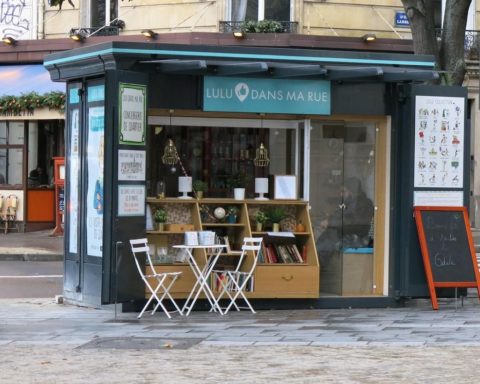Since the early 2000s, there has been an explosion in the number of cooperative-type innovation projects, i.e. projects conducted by several entities (co-petitors, customers and suppliers, companies from different sectors, companies and public research centres, etc.). This has resulted in management difficulties, which remain unresolved for the time being.
Conducting a cooperative project means involving a variety of partners (in terms of size, legal structure, etc.) with often divergent economic interests; individuals from sometimes radically different cultures (business world versus scientific logic, plurality of nationalities and languages); hence questions about the mode of governance, the role of information systems, the profile and skills of the project leader, the ownership of the knowledge contributed by each protagonist and, also, that of the knowledge created within the framework of the project.
Beyond the management difficulties of each project taken separately, there are questions of coordination of these projects between them, of coherence with the innovation management of the companies involved; thus problems of multi-project management that we propose to examine in the light of the theoretical corpus previously developed on the subject. We will focus the analysis on competitiveness clusters, as they are called upon to play an increasingly important role in the French Research and Innovation System (Fernez-Walch and Romon, 2008).
Our thinking is based on previous research work, on exchanges with innovation players working in companies or in clusters, and on the supervision of a thesis produced as part of a university course of study. (Vagner, 2009).
1) The explosion in the number of cooperative-type projects is creating management problems that have yet to be resolved.
 Two interdependent factors seem to us to explain the explosion in the number of cooperative-type projects and shed light on the management difficulties encountered, both at the level of the coordinating and mobilizing entities (the competitiveness clusters) and the companies involved in the projects: on the one hand, an intrinsic factor in the innovation process, its shift towards an open mode and, on the other hand, an extrinsic factor, the growth of public intervention (notably through financial aid) which, by function, can only apply to a plurality of actors, encouraging them to open up their innovation management mode even more.
Two interdependent factors seem to us to explain the explosion in the number of cooperative-type projects and shed light on the management difficulties encountered, both at the level of the coordinating and mobilizing entities (the competitiveness clusters) and the companies involved in the projects: on the one hand, an intrinsic factor in the innovation process, its shift towards an open mode and, on the other hand, an extrinsic factor, the growth of public intervention (notably through financial aid) which, by function, can only apply to a plurality of actors, encouraging them to open up their innovation management mode even more.
* Open innovation
Henry Chesbrough suggests that innovation can no longer take place in isolation within the firm (2003). Firms have an interest in cooperating with other firms (competitors, co-petitors, suppliers, customers, etc.) and public research centres to innovate. It is open innovation that invites enterprises to promote their research results externally and to take their ideas for new projects from there.
This can be done through the creation of an innovative company, the sale (purchase) of patents, licensing, venture capital and partnerships.
Open innovation leads to the management of cooperative innovation projects, either to develop new technologies and knowledge, or to bring these technologies to current and new markets.
* Increasing the use of public funding and structuring public policies to support innovation
Due to the greater fluidity of markets, their interdependence and the growing complexity of technologies, there is growing uncertainty about the outlets for innovation projects.
Today, in a context of economic and financial crisis, companies are finding it more difficult to finance their innovation projects. As a result, they are turning to external sources of financing: public funding, venture capital and co-financing through joint ventures and partnerships. At the same time, European governments are strengthening and structuring their innovation support policies: research tax credit, European programmes and, more recently, competitiveness clusters.
Fernez-Walch and Romon (2008) point out that competitiveness clusters were created in France, following the example of other industrialized countries, on the model of the American "clusters". (Silicon Valley in California, Route 128 in Massachusetts, Research Tiangle Park in North Carolina), and the German "Fraunhofer" institutes. They are defined by the CIADT, Interministerial Committee for Regional Planning and DevelopmentThis is the "combination, in a given geographical area, of companies, training centres and public or private research units engaged in a partnership approach designed to generate synergies around innovative projects". Following the call for projects to set up clusters launched in 2004, 67 clusters were approved by the CIADT in July 2005, out of 105 candidate projects.
In the years to come, companies will have to join the competitiveness clusters, as they are set to grow in size and risk becoming an essential means of accessing public funding. Moreover, with the transition to the cluster 2.0 stage, we can expect public funding to be concentrated on a reduced number of clusters that will have been judged to be the most efficient and the most open to internationalisation. As a result, there should be an increase in the number of label applications and projects labeled per cluster.
* Management problems created by open innovation and the structuring of competitiveness clusters
Problems of coordination, arbitration, and therefore multi-project management arise, both at the level of companies involved in cooperative innovation projects and in coordinating entities such as competitiveness clusters.
- Businesses must carry out cooperative-type projects that are part of partnerships, co-financed or even totally financed externally, as well as projects financed internally.
Cooperative-type projects compete with other projects for limited human resources in a context of crisis.
Isn't there a risk of favouring cooperative projects under the pretext that the deadlines, imposed from outside, are close and that the enterprise is committed to its partners or financial backers? What about internal research under these conditions, which should not, as Chesbrough himself asserts, be suppressed (2003)?
- Because they coordinate cooperative projects involving companies and public research centres, competitiveness clusters and clusters are organisational forms of open innovation, located in a given territory (which does not prevent them from going to the other side of the world to find the knowledge they need) and in targeted fields of action (defined according to scientific objectives and economic models associated with sectors or industries).
The mission of a competitiveness cluster is to encourage the economic and scientific actors of a territory to cooperate for the duration of a project, to pool their knowledge and skills.
To this end, the cluster helps project leaders in setting up their projects so that they have a chance of obtaining public funding; it also monitors the progress of the projects it has labelled to ensure their success.
As a result, with the increase in the number of projects to be labelled, the cluster is moving, if it is not already there, towards a complex organisational situation: constraints of limited human resources to ensure support for the increasing number of project leaders and project managers, problems of selection and coordination of cooperative projects competing for funding but able to share common knowledge and technologies. We are indeed in a multi-project management situation, as we will see now.
2) Implementing multi-project management in a competitiveness cluster
 In order to study the relevance of multi-project management for competitiveness clusters, we will quickly present the principles. We will then see that multi-project management can be implemented in a competitiveness cluster on condition that we not only take into account the problems of arbitration between projects but also the synergies between projects linked to the sharing of knowledge and technologies.
In order to study the relevance of multi-project management for competitiveness clusters, we will quickly present the principles. We will then see that multi-project management can be implemented in a competitiveness cluster on condition that we not only take into account the problems of arbitration between projects but also the synergies between projects linked to the sharing of knowledge and technologies.
- Multi-project management: three types of practices developed for different needs and in various sectors of activity
Multi-project management is not new. During the 1990s, then at the beginning of the 2000s, it spread to various sectors of activity to meet different management needs; this in three different and unrelated forms (Fernez-Walch and Triomphe, 2004). The main areas of expertise are: project portfolio management (portfolio approach), management of project families sharing common components and platforms (platform approach) and management of project trajectories (lineages) (trajectory approach).
– The portfolio approach is to "manage one (or more) project portfolio(s) as an object and not the projects in the portfolio separately. It is about selecting, controlling and steering projects by portfolio, taking into account their interactions (arbitration for the launch and progress of projects, sharing of human and financial resources), linking projects and strategy via the portfolio, communicating and negotiating via the portfolio ("selling" a project outside the company, negotiating a research and development budget)". (Fernez-Walch and Romon, 2008).
Today we talk about IT project portfolios, R&D project portfolios. Many companies also have project portfolios based on business units or strategic areas of activity. (Cooper et al, 1998). One of the most frequently used tools for portfolio management is the pipe line model, which aims to represent a portfolio of projects according to their stage of completion.
– The platform approach aims to "organize product innovation in the company around the management of project sets (project families) whose products will share common components, sub-systems or even a common platform". (Fernez-Walch and Romon, 2008).
The IT industry has implemented such approaches with a company that owns the platform (e.g. Intel with microprocessors) and partner companies that design differentiated products based on this common platform (hardware, operating system and peripherals companies).
- The trajectory approach aims to "manage and organize project flows (innovation trajectories) that are launched according to a strategic logic, based on sharing between projects and the valorization of the company's knowledge. Families of products (also called product lines) are thus developed, based on guiding concepts that may be technological or market knowledge". (Fernez-Walch and Romon, 2008)..
3M has mastered the skills required to apply its abrasion and coating techniques in the home, office, cleaning products and health markets. (Fernez-Walch and Romon, 2008).
Comparing the three approaches, Fernez-Walch and Triomphe (2004) proposed an inclusive definition of multi-project management, a definition that is now adopted by the French-speaking scientific community. (Aubry et al, 2007, Midler and Silberzahna, 2008, for example). as a theoretical framework for the management of the multi-project company and which was recently enriched by Fernez-Walch and Romon (2008): "Multi-project management is an "organizational approach consisting in managing, in a global way, one or several sets of projects by taking into account the interdependence between the projects of each set. Managing a set of projects globally means using management tools and implementing organisational systems dedicated to each set of projects and not only at the level of each project taken separately".
What can this theoretical framework contribute to the management problems encountered by competitiveness clusters?
* Implement a portfolio approach in the clusters, taking into account the synergies between the various cooperative projects.
At first glance, what strikes at the level of a competitiveness cluster is the competition between innovation projects: during the selection process for labeling, when setting up projects to obtain funding and then when they are implemented. We are faced with a "portfolio" problem. Today, in some divisions, we find the beginnings of project portfolio management, ranging from the instrumentation of a single portfolio (example of aAgrimip Innovation) to a portfolio organization (example of Aerospace Valley).
The cluster Agrimip Innovation is beginning to apply certain portfolio management tools, such as the Project Funnel (Vagner, 2009)to manage a unique portfolio of R&D projects. This model allows the cluster to approach all of its projects in a global manner with the aim of optimizing project progress and the selection process, and linking projects to strategy, in order to improve the efficiency of the cluster's operations.
The cluster Aerospace Valley labels its cooperation projects within nine Strategic Activity Areas (SAOs). Projects are selected according to their relevance to one of the SBAs and are included in the corresponding portfolio. They are then probably accompanied separately but also in comparison with the other projects in the portfolio to which they relate. Reporting can be carried out for each portfolio, i.e. by DAS.
This allows Aerospace Valley to avoid competition between projects in one portfolio and those in other portfolios and thus to cover all its strategic areas. The portfolio approach is adopted here, but not only with an instrumental logic. The portfolio becomes an organizational object of the cluster as advocated by Fernez-Walch et al (2006).
The creation of portfolios based on the criterion of strategic suitability presents a risk: it is a matter of not getting locked into an overly rigid strategic line of conduct by rejecting any project on the pretext that it cannot belong to any portfolio. It is essential to be able to develop the division's strategy through an approach of the following type bottom up, according to the themes of the projects proposed by the potential promoters, which necessarily raises questions of governance.
In addition, the presence of several portfolios requires an additional level of coordination between the support of each project and the strategic management of the division, i.e. multi-portfolio management. (Fernez-Walch, 2004)..
Adopting a portfolio approach makes it possible to control and steer the projects in the portfolio while taking into account their interactions. But most of the time these interactions are seen from a competitive point of view. We therefore propose to adopt a portfolio approach but taking into account the search for synergies between projects.
- A proposal, the multi-portfolio approach: linking the portfolio approach with the platform approach and the trajectory approach
The clusters were created to foster innovation in French companies. Cooperative projects must therefore be seen as places for creating and sharing knowledge and not just as non-recurring processes driven by a project management logic. Like any innovation process, the cooperative project is a "collective learning process". (Hatchuel, 1994)a "process of creating new meanings and new knowledge, which are mostly of a tacit nature". (Chanal, 1999).
We therefore suggest taking into account the interdependencies between projects in a pole other than the allocation of financial resources: sharing of knowledge (technological, market, logistical, other), and even, why not (when possible), sharing of common components.
This approach, linking the portfolio approach to the other two approaches, the platform approach and the trajectory approach, is possible.
The study we conducted, in 2006-2008, in a company very strongly involved in the Aerospace Valley cluster, Liebherr Aerospace Toulouse (LTS), the world's second largest air systems market for aircraft cabins, has made it possible to highlight the interdependencies between the various innovation projects from the point of view of both competition and the constructive sharing of knowledge and technology.
The company has thus identified five relevant project portfolios, according to structuring criteria reflecting the company's strategic management of innovation.
Management processes associated with each portfolio have been developed based on LTS's existing practices and the specificities of the context, with the ultimate aim of progressively improving the company's R&D and innovation organisation.
During the course of the study, the company felt the need for multi-portfolio management; hence the formalisation of three multi-portfolio management processes relating, respectively, to R&D and innovation budgeting, aligning portfolios with each other and with the LTS strategy, and allocating human resources.
Conclusion
The evaluation report, submitted to the Prime Minister on 18 June 2008, concluded that the competitiveness clusters are relevant to the development of the French Research and Innovation System (SFRI). However, it also underlines the need to strengthen their structures and management. While the State has renewed the system, once again making financial commitments for three years, it has asked each cluster to define its strategy more precisely, to make a contractual commitment with it on the achievement of results in terms of business competitiveness and to professionalise its innovation management. This is the transition to the "Cluster 2.0" phase.
In this context, it is crucial to improve innovation management practices: structures, decision-making, management tools and especially means of measuring the results of innovation. (Romon 2006), whether at the level of competitiveness clusters or at the level of the companies involved in these clusters.
Multi-project management reconciling the portfolio approach, the platform approach and the trajectory approach seems to us to be a track to be explored as a priority.
Sandrine Fernez-Walch (www.innovationmanagement.fr - February 2013)
Notes
This article represents the first publication referring to this research, the report of which is the property of LTS. (cf. ww.liebherr.com).
References
- AUBRY M., HOBBS B., THUILLIER D. (2007), "A new Framework for understanding organisational project management through the PMO," International Journal of Project Management, 25, 328-336.
- CHANAL V. (2000), "Communautés de pratiques et management par projet: à propos de l'ouvrage de Wenger", Management, vol. Management, Vol. 3, No. 1.
- CHESBROUGH H. W. (2003), Open innovation, Harvard Business School Press, Boston, Massachusetts.
- COOPER R. G., EDGETT S. J., KLEINSCHMIDT E. J. (1998), "Best Practices for Managing R&D Portfolios", Research Technology Management, July-August, pp. 20-33.
- FERNEZ-WALCH S. (2004), "La problématique de portefeuilles de projets : finalités et mise en oeuvre ", Faire de la recherche en management de projet, GAREL G., GIARD V., MIDLER C. dir., chapitre X, Vuibert, Paris, p. 209-224.
- FERNEZ-WALCH S., GIDEL T., ROMON F. (2006), "Le Portefeuille de projets d'innovation, objet de gestion et d'organisation", Revue Française de Gestion n° 165, June 2006, p. 87-103.
- FERNEZ-WALCH S., ROMON F. (2006), Le management de l'innovation. De la stratégie aux projets, Vuibert, Paris.
- FERNEZ-WALCH S., ROMON F. (2008), Dictionnaire du management de l'innovation, Paris, Vuibert
- FERNEZ-WALCH S., TRIUMPH S. (2004), " L'approche plate-forme : le management des familles de projets articulées autour de composants ", Faire de la recherche en management de projet, GAREL G., GIARD V., MIDLER C. (dir.), Vuibert, Paris, chap. 12, pp. 247-279 .
- GIDEL T. (2004), " Instrumentation du Management multi-projets ", in Faire de la recherche en management de projet, GAREL G., GIARD V., MIDLER C. (dir.), Paris, Vuibert, chap. 13, p. 281-301.
- HATCHUEL A. (1994), "Apprentissages collectifs et activité de conception," Revue française de gestion, no. 99, pp. 109-120.
- MIDLER V., SILBERZAHNA P. (2008), "Managing robust development process for high-tech start-ups through multi-project learning: The case of two European start-ups", International Journal of Project Management 26 (2008) 479-486.
- ROMON F. (2006), " L'appréciation des performances d'innovation de l'entreprise " in AÏT-EL-HADJ S. & BRETTE O., Innovation, management des processus et création de valeur, November 2006, Paris, l'Harmattan, Chapter 3, p. 43-66.
- VAGNER Valérie (2009), Strategy, governance and management process of R&D projects of the AGRIMIP INNOVATION competitiveness cluster, Master 2 thesis Innovation Management, IAE de Toulouse, Toulouse.
{Jacuzzi on}












